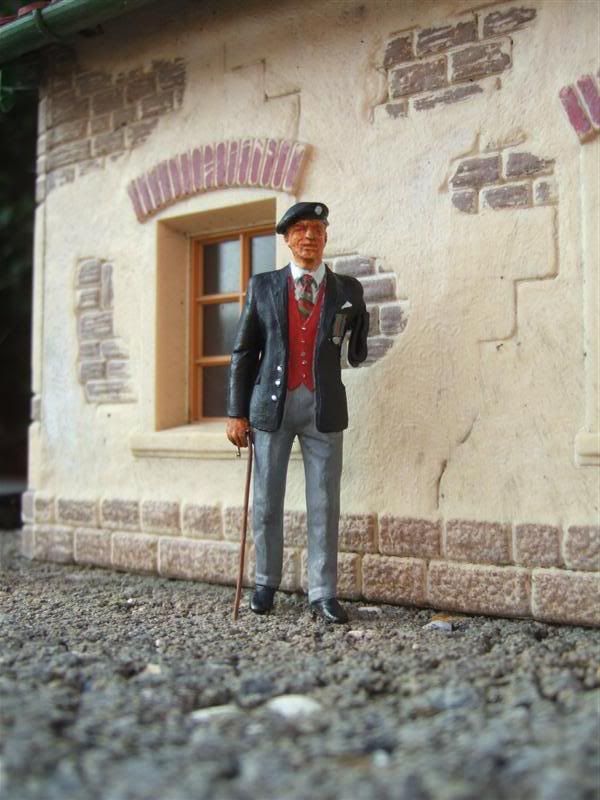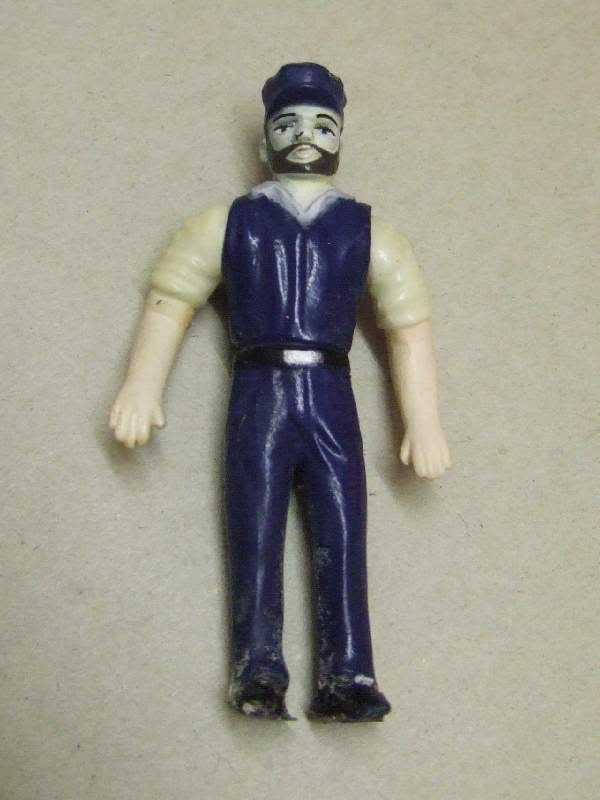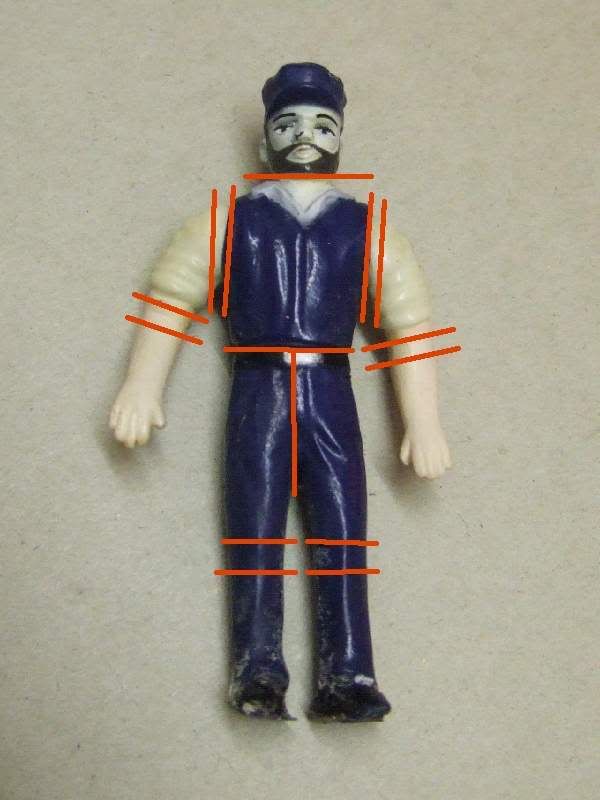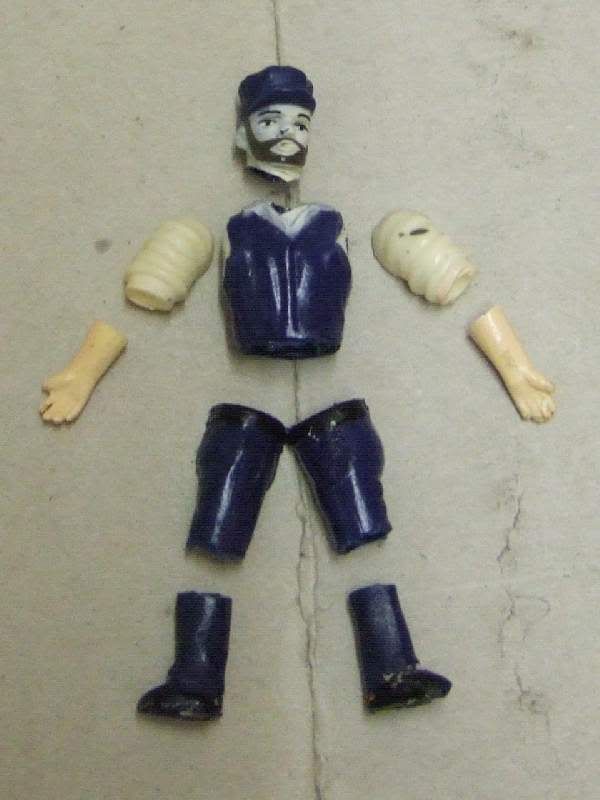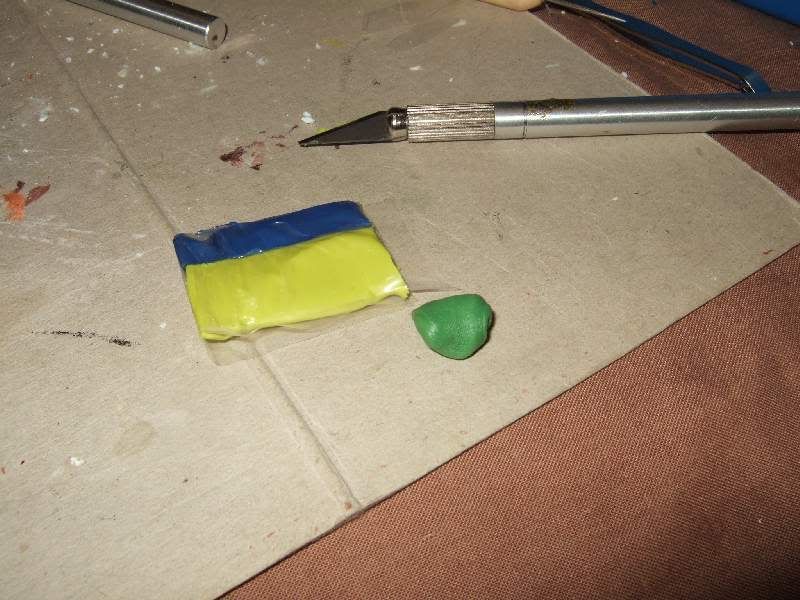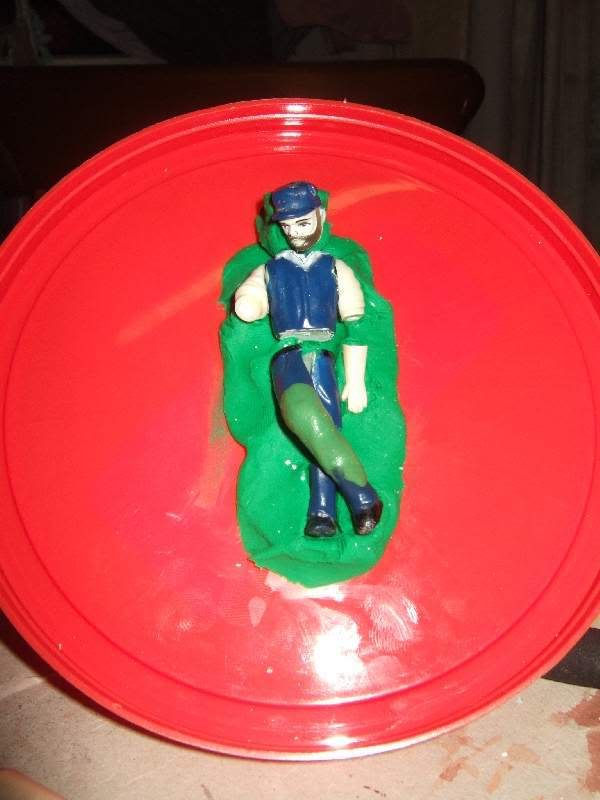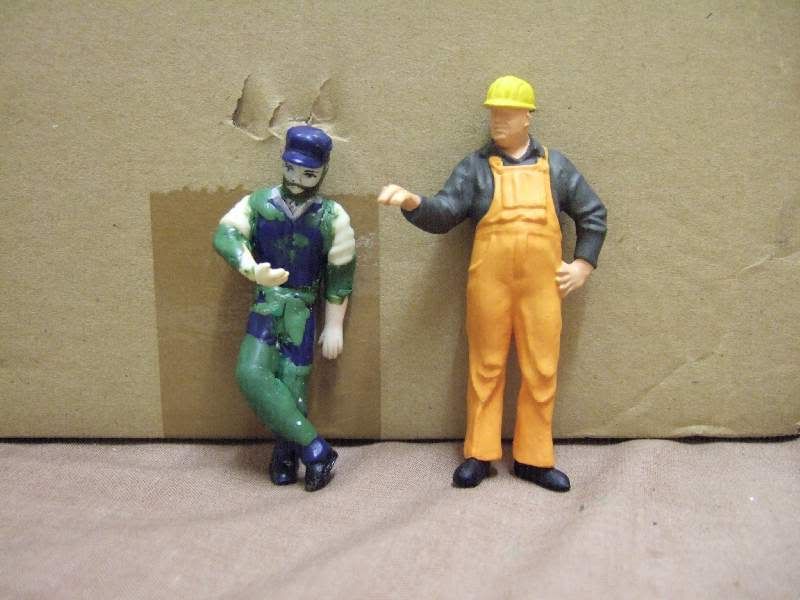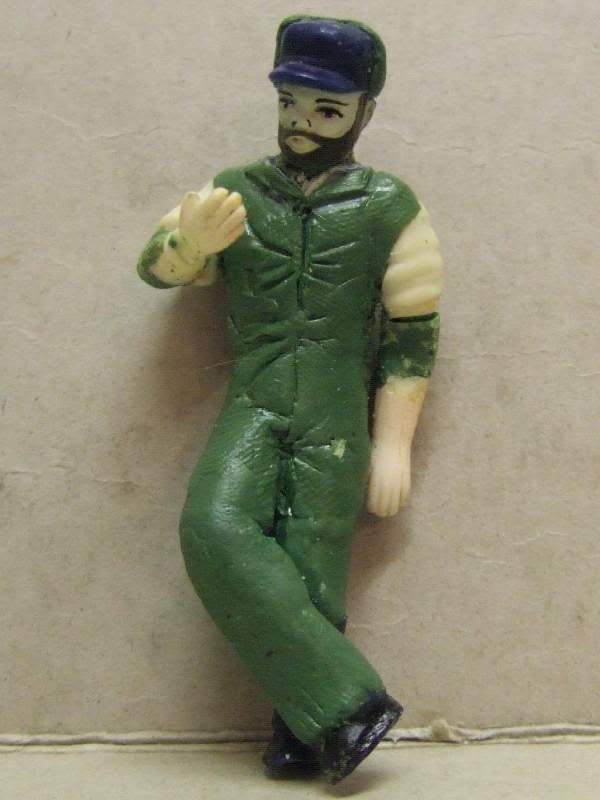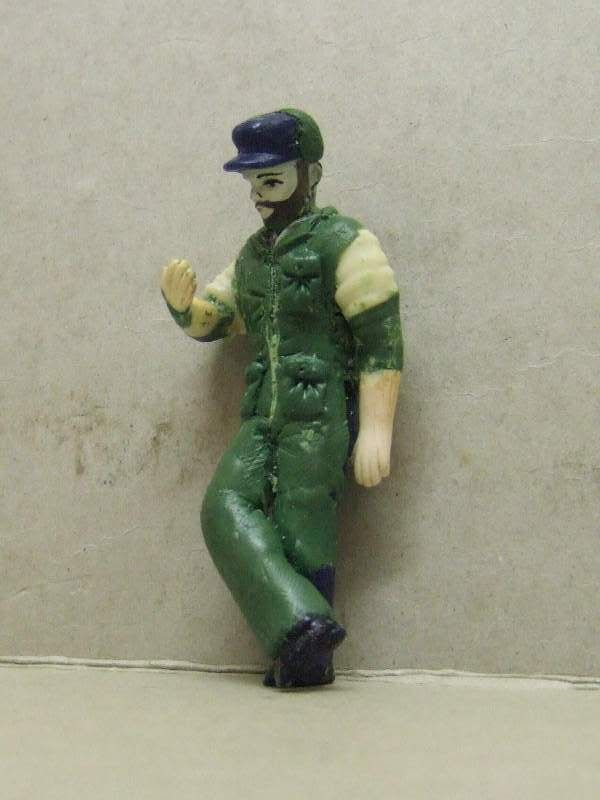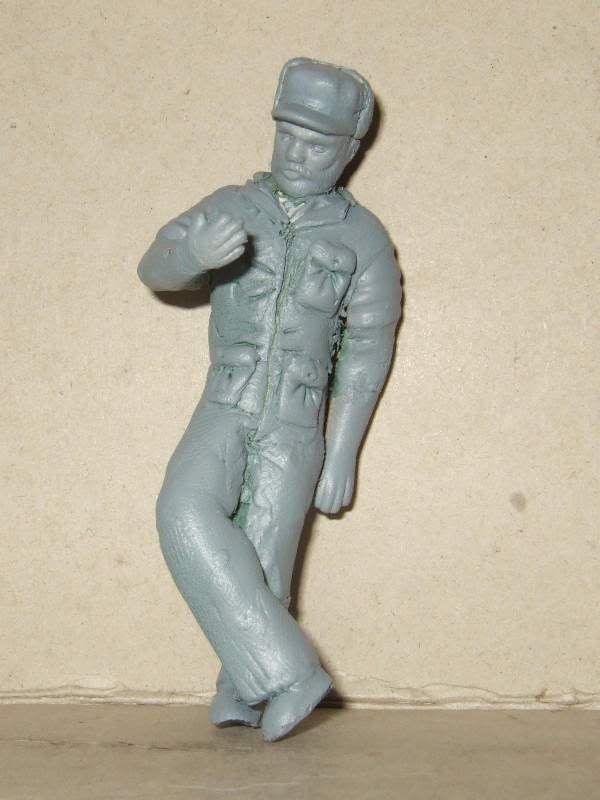So, what sort of figure could I model this time? Well, I found that there were two distinct ways to approach this: Firstly, separate all the model components (the arms, bodies, heads etc) and try putting 2 or 3 together, to see if any particular pose suggests itself; secondly, to choose a pose from some other source, such as a magazine or book, the internet, or dare I say it, your own fevered imagination, and select the most appropriate combination of body parts that will form that pose with the least amount of effort. Essentially the aim is to create a figure adopting a natural pose.
The look I was after for this my second sculpture was of a chap sitting casually at an angle on a seat (or bench) with one foot resting on the opposite thigh, and looking relaxed. Fortunately, one of the 'hands' in the kit has a good tight grip on what appears to be a bottle of Grolsch beer (the tell-tale hinged stopper clinched it for me). Since I myself have been known to relax in just such a way, I decided that just had to be used. The figure was then arranged, by cutting one leg off at the top of the thigh, and rotating it so that the foot rested on the knee of the opposite leg. The limbs including the severed leg were then attached to the body by means of short lengths of copper wire (the kind found in mains cable) pushed into holes drilled in the plastic at appropriate points.
For the building of 'Dave' (remember him?) I relied totally on Kneadtite Duro or 'Green Stuff' for building up the body as well as the details; on this occasion I decided to try using Milliput (a two-part epoxy putty) as the filling medium. The terra-cotta colour certainly stands out well against the white of the moulded plastic, which for my forty-something vision is indeed of great benefit. Mixing the right amount was a little hit-and-miss initially, as I tended to make more than I actually needed for the job in hand. The way around this is to have some sort of idea as to what you will make with the excess – luggage is an obvious option, as even a modest amount of excess Milliput could go to make a small case, or crate, or in these modern times perhaps even a laptop computer! In my case, once my figure was rebuilt I had enough left over to make a large-ish cabin-trunk for some unfortunate porter to lug around. With experience, however, I have no doubt that the need to find gainful employment for large amounts of excess Milliput will become less frequent.
I would say that the essential difference between Milliput and Green Stuff hereinafter referred to as 'GS' to save my fingers!) is that Milliput gives you just over an hour maximum before it starts to become unworkable, whereas GS (in its 50:50 mix) gives you much longer and even after setting is slightly flexible. Milliput sets rock-hard, and is much easier to sand and file than GS, which I found rather more difficult to carve once set. Oh, and Milliput is cheaper – much cheaper! Both materials have their good points though, so I guess it's a case of 'you pays yer money and you takes yer choice': Milliput for large expanses of filling, GS for fine detail, thin layers of clothing etc. The only caveat with using both on the same model would be to make sure the different layers are given a decent amount of time to 'go off' before applying the next layer on top.
I expect by now, dear reader, you have suffered a partial collapse of the will to live. So, in a desperate attempt to rekindle some sort of interest, or at any rate a pulse, here's a picture that shows the result of the initial build and filling in:
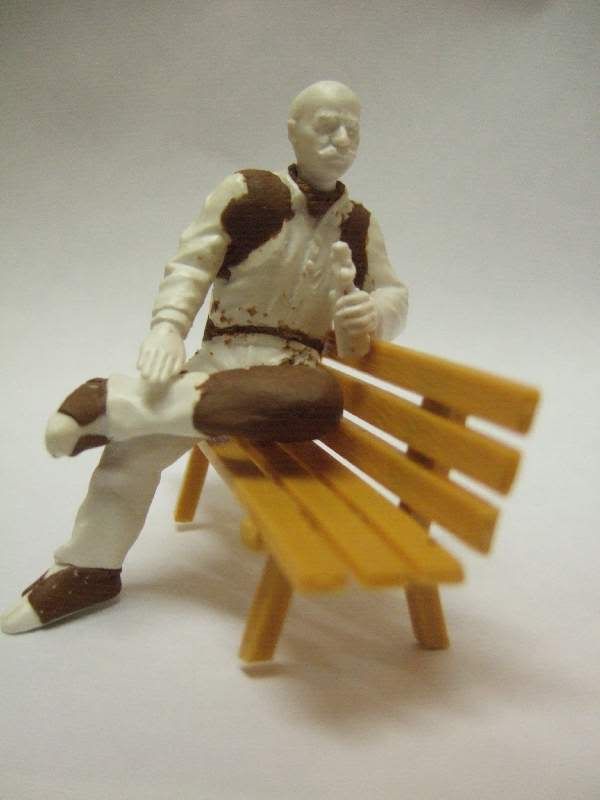
In surveying the results, I was not overly impressed with the right hand – it looked like a false hand to me, no life to it at all. I decided to replace it with something else from one of the other available hands.
Having sprayed the body with grey primer, it became very clear that my hamfisted attempts with Milliput had left a large number of unsightly lumps and bumps where the putty met with the original plastic. At this stage I learned what a useful tool a Dremel is... with a small abrasive 'cone' I set to cleaning away a lot of dross and at the same time making the joins a lot more seamless.
As a finishing touch, I felt he needed some sort of 'waistcoat' to complete the ensemble - this would be a job for GS, as it would allow me to model a garment actually hanging open at the front. This time, though, I learned my lesson – I had a small bowl of water nearby when attempting to hold the subject, thereby preventing my carefully-laid work from being peeled away by 'sticky-finger syndrome'. Will to live draining away again? OK, cop for this:
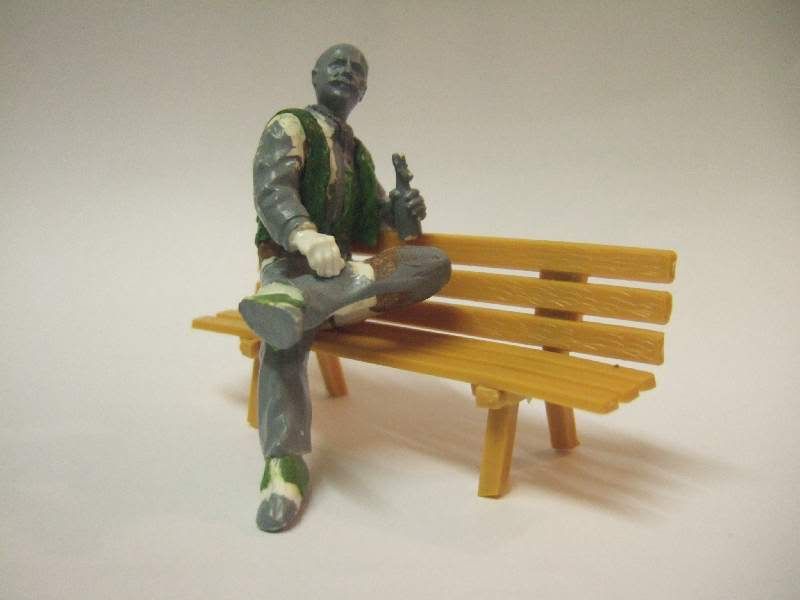
As far as moulding and sculpting is concerned, that really is all there is to it, with just a visit to the paint-shop needed. This is where, I believe, the choice of Preiser figures pays dividends, with their very high quality moulding detail that absolutely screams out for the 'paint, wash and dry-brush' treatment. At the risk of spoiling you, dear reader, here's another picture of our new hero, 'Cyril', enjoying a cheeky beer outside Scampington Station while the rest of the world hurries on by:
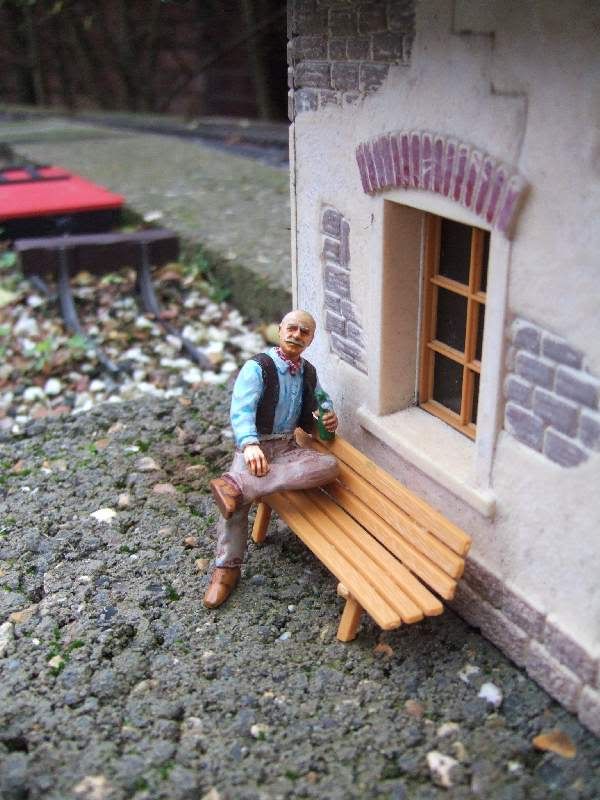
This technique has been used quite successfully on subsequent figures. Stand by for sensory overload, pictures coming thick and fast now...
A drunken Frenchman:
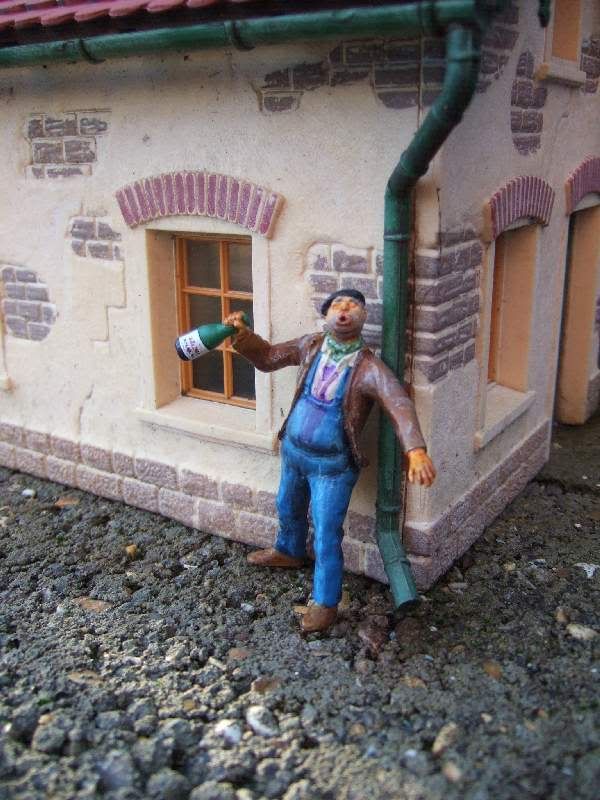
A railway worker (enjoying his pizza and beer - again with the alcohol!):
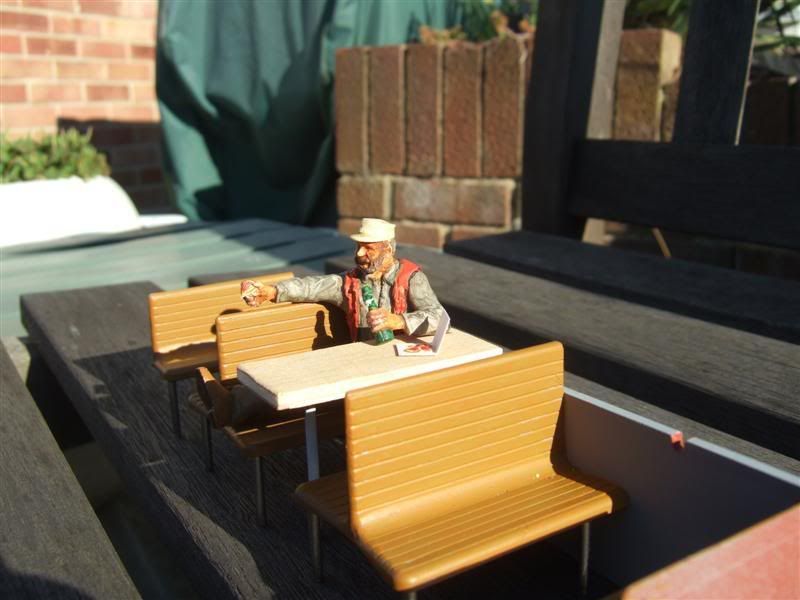
A passenger sitting casually, reading his paper:
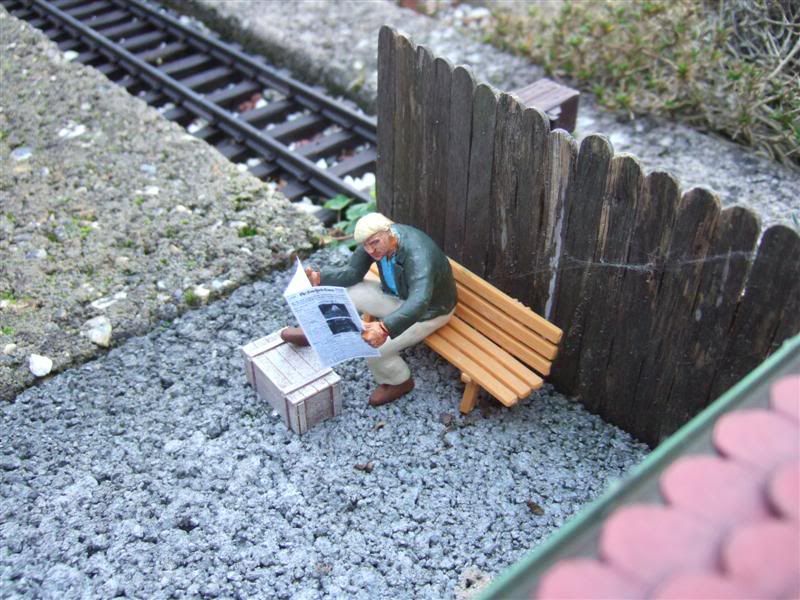
A French tram driver:
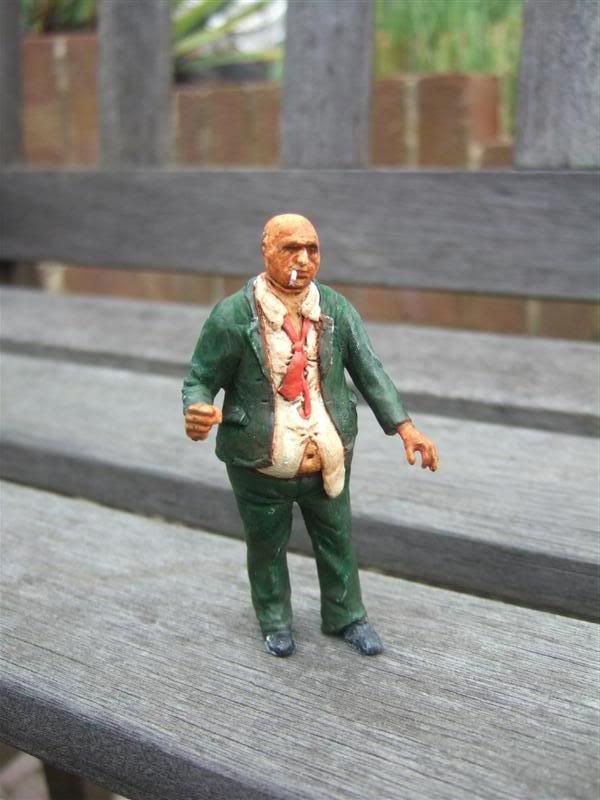
This gendarme figure was a commission build, the fee for which will be donated to the Friends of Mary Rose, a charity which raises funds for the Mary Rose School, Portsmouth - a school for children with severe physical and learning impairment:
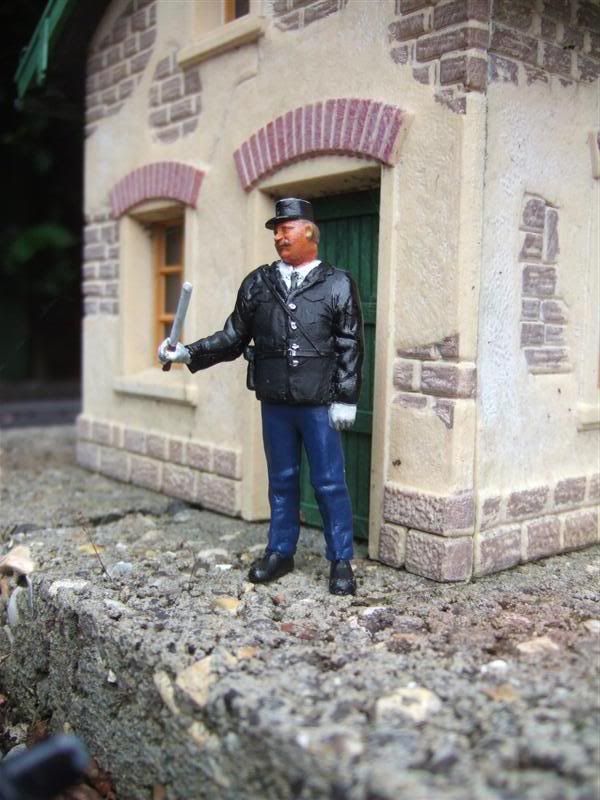
A British tram-loco driver (driving a German tram-loco? As the Americans say, "go figure!"):

A war veteran:
